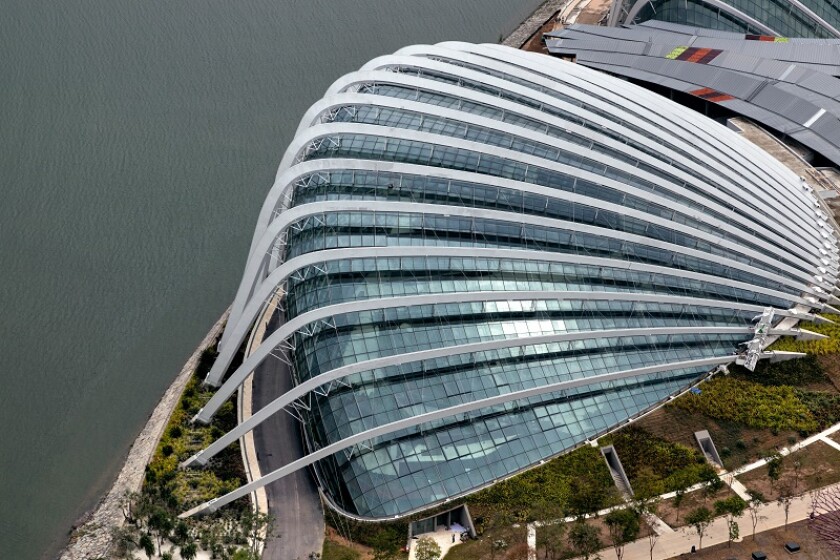Ben Shorten and Jean-Louis Neves Mandelli, Shearman & Sterling
SECTION 1: Market overview
1.1 Please provide an overview of the project finance market in your jurisdiction.
The largest project finance market in the region in recent years has been Indonesia. While there has continued to be significant activity, including some high-profile closings such as the Tanjung Jati B IPP, the Cirebon 2 IPP and the $2.75 billion Paiton bond and loan refinancing, investors have been more cautious in relation to new Indonesian projects due to the numerous regulatory and policy changes introduced in 2017. A similar lack of regulatory certainty has also affected the progress of investment in Vietnam. 2017 has, however, seen the rise of new markets such as Bangladesh and Myanmar, with landmark closings in each of them.
A key development this year has been the spectacular rise of interest in LNG to power projects (ie IPPs using LNG as fuel), especially with floating storage and regasification units (FSRUs). As well as the Jawa 1 IPP in Indonesia, there are currently LNG to power schemes contemplated in Bangladesh, Myanmar and the Philippines (to name a few).
1.2 What is the composition of the market in terms of the types of active lending institutions and has this been evolving?
As it is still challenging for commercial lenders to provide uncovered loans in most regional jurisdictions, development finance institutions (DFIs) and export credit agencies (ECA)s have continued to play a key role in mobilising financing.
DFIs have been especially active in newer project finance markets such as Myanmar and Bangladesh. For instance, the IFC, CDC, Clifford Capital and Japan International Cooperation Agency (Jica) provided financing to the Sirajganj 4 IPP in Bangladesh. On the multilateral front, the IFC and Asian Development Bank (ADB) are continuing to increase their focus on mobilising third party financing in deal financings and on offering local currency financings. The recently established Asian Infrastructure Investment Bank (AIIB) is also increasingly active in project financings across the region.
On the ECA front, Japanese and Korean ECAs continue to play a key role in major infrastructure financings in the region (both through direct loans and political risk cover). Chinese ECAs are increasingly active.
The involvement of the bond market through the Paiton refinancing has been a major development (see below).
1.3 Please describe any major current projects or initiatives that are influencing activity.
On the regulatory front, the regulatory and policy changes introduced recently in Indonesia are probably the most talked about development of 2017. This is partly due to the huge potential of the market but also due to the nature, extent and frequency of the changes. Tens of regulations have been passed this year, some revising regulations introduced earlier in the year, affecting key issues such as tariffs (now often benchmarked to local average power generation prices), risk allocation (including on grid and political risk) and transfer rights (including with respect to lender rights on enforcement). The new non-state budget infrastructure funding structure (Pina) introduced by the Indonesian government (discussed further below) has also brought about a dramatic change in the structure of Indonesian infrastructure projects.
Current LNG market developments, as well as the shift away from coal IPPs by a number of stakeholders, have led to tremendous interest in LNG regasification projects (especially FSRUs) and LNG to power IPPs both in gas producing countries such as Indonesia and Myanmar and in gas importing countries such as Bangladesh. The Jawa 1 LNG to power IPP, the power purchase agreement (PPA) for which was signed earlier this year, is the first of its kind in this region and was a watershed project for the development of LNG to power.
Governments across the region continue to champion renewable energy, in particular solar, wind and run of the river hydro, albeit with varying degrees of success. For example, although the Vietnamese government introduced new regulations on wind and solar IPPs and PPAs in 2017, the market view is that there are still key bankability issues. In Myanmar, the government is working with DFIs, developers and advisors to facilitate the development of its huge hydropower potential by developing a standard set of commercial documentation.
Other key projects which will influence activity in the region include the Singapore-KL high speed rail project and the $28 billion Refinery and Petrochemical Integrated Development (Rapid) project, which Shearman & Sterling is advising Petronas on.
SECTION 2: Transaction structures
2.1 Please review some recent notable transactions involving your market and outline any interesting aspects in their structures.
Paiton bond and loan refinancing – It included two bond tranches of $2 billion in total and was the first investment-grade, and the largest amortising, international bond for an infrastructure project in Asia since 2000.
Jawa 1 LNG-to-power IPP – This will be the first LNG to power project to be developed in the region. It will include a dedicated FSRU offshore receiving terminal.
Sirajganj 4 IPP – This was the first project financed IPP in Bangladesh to involve foreign sponsors and the largest foreign investment in the country for a number of years.
2.2 What might the projects above mean for the market and have you noted other noteworthy developments in the way project finance transactions are being structured for a) energy projects and b) infrastructure development?
The Paiton Refinancing has been a major development in the regional project financing market and could potentially trigger a wave of refinancings (and possibly financings) involving bonds in the region.
The Jawa 1 LNG to Power IPP could pave the way for the development and financing of other LNG to power projects across the region, setting the benchmark for future projects.
The Sirajganj 4 IPP has triggered an unprecedented wave of foreign investment interest in Bangladesh, including in LNG, conventional and renewable power.
SECTION 3: Legislation and policy
3.1 Describe the key legislation and regulatory bodies that govern project financing in your jurisdiction.
No jurisdiction in this region has triggered as much discussion around its regulatory and policy changes this year as Indonesia.
In the energy sector, policies are developed by the Ministry of Energy and Mineral Resources (MEMR). Depending on the project, the PPP Regulations issued by Presidential Regulation in 2015 may also apply. Foreign investors will typically require investment approvals from the Investment Coordination Board (BKPM) and, in respect of foreign debt financing arrangements, Team for Coordination of the Management of Offshore Commercial Loans (PKLN).
3.2 Have there been any recent changes to regulations or regulators that may impact the finance structuring in terms of guarantee and security regimes, local currency rules and foreign investment restrictions?
Yes. In Indonesia, under Regulation 48 of 2017 (replacing an earlier Regulation), it is only possible to transfer shares in an IPP project company pre-commercial operation to a 90% owned affiliate of the transferring shareholder. There is no carve out for share transfers by lenders in case of enforcement. It is therefore not possible for lenders to enforce their onshore share security over the project company's shares. Depending on the identity of the shareholder, a number of structures may be available to address this issue.
Furthermore, under Indonesian law, the recent Currency Law requires the payment of all PPA tariffs in rupiah, exposing projects to currency risk, given their financing tends to be in US dollars. We helped develop a package of contractual mitigants which addresses the risk of inconvertibility of rupiah into US dollars (which has been accepted by the Japan Bank for International Cooperation (JBIC), Korea Trade Insurance Corporation (K-sure) and other similar institutions) and which has been applied in projects.
With respect to foreign investment restrictions, the Indonesian Government's new Pina initiative involves a structure for IPPs whereby state-owned monopoly off-taker PLN's subsidiary is a 51% shareholder in the IPP and takes the lead on the operation of the IPP. This raises a number of questions, including how to overcome restrictions on the grant of typical security interest over the IPP's assets under the terms of the World Bank's loans to Indonesia and how to grant effective share security to lenders.
3.3 Please describe the regime governing renewable energy investment.
Indonesia's renewable energy regime was reformed in 2017 under MEMR Regulations 12 and 50. They imposed new rules on renewable energy tariffs and the contracting regimes applicable to different types of renewable energy projects. Under Regulation 12, renewable energy tariffs were capped by reference to the average cost of generating power in each local area (Generating BPP). The applicable cap will either be Generating BPP, if Generating BPP for the area is less or equal to national average (ie Java, Sumatra and Bali); or 85% of Generating BPP if Generating BPP for the area is above national average (i.e., other provinces). As a result of concerns around this cap being too low, to allow for the development of renewable energy capacity (especially in areas where prices are already equal or lower than national average), MEMR Regulation 50 was introduced to allow a bilateral negotiation of tariffs in these areas.
Under the new regulatory regime, solar and wind projects will be subject to a tender process based on capacity stated as being available in PLN's electricity supply business plan. Other renewable energy projects are either subject to a reference price or direct selection process.
3.4 Does your jurisdiction have incentive schemes in place for various types of energy or infrastructure project development?
Yes. These may include regulatory exemptions and tax incentives.
3.5 Are there any rules, legislation or policy frameworks under discussion that may impact project finance in your jurisdiction?
We would expect the terms on which the Pina projects will be developed to impact projects to be developed under that scheme.
SECTION 4: Market idiosyncrasies
4.1 Please describe any common mistakes or misconceptions that exist about the project finance market in your jurisdiction.
A key pitfall is often underestimating the intricacies of the local bureaucracies and the practical difficulties that may arise in obtaining permits (even where the local government has committed to provide these contractually).
4.2 What measures should be taken to best prepare for your market idiosyncrasies?
Consult with local counsel and international advisors with experience of dealing with the realities of project financing in that jurisdiction sufficiently early in the project implementation process.
SECTION 5: Practical considerations
5.1 How established is the legislative framework and authorities that govern public-private partnerships (PPP) and where have PPP structures most successfully been applied?
Most jurisdictions in the region have developed PPP regulations/legislation. The extent to which these are used (or have been successful in) the development of infrastructure project varies significantly.
Countries such as Bangladesh, which has a comprehensive and consistent PPP regime, are starting to reap the benefits of this regime, with an overall year-on-year increase in PPP projects with foreign sponsor participation between 2014-2016. Contrast this with Vietnam, where inconsistencies and frequent changes to the PPP regime resulted in no new PPP project with foreign sponsors in 2016.
5.2 What are the key considerations relating to foreign investment into projects as regards insurance and tax structures?
Political risk insurance tends to be required by most lenders in the region (whether from ECAs, multilaterals or the private sector). Some developers also take out political risk insurance in respect of their equity investment.
Withholding tax on dividends and shareholder loan interest is often a key structuring consideration for foreign investors.
5.3 Are there any specific issues creditors should be mindful of regarding a bankruptcy and restructuring scenario?
In civil law countries such as Indonesia there may be restrictions on the ability of secured lenders to foreclose on assets and dispose of them through a private sale. The involvement of local courts in insolvency proceedings can also create uncertainty.
SECTION 6: Outlook
6.1 What are your predictions for the next 12 months in the project development and financing sector and how do you expect legal practice to respond?
We expect to see increased activity in the LNG to power sector as well as a continued strong renewable projects pipeline. In terms of jurisdictions, we would expect Bangladesh and Myanmar to be very active in 2018. There are a number of projects in Indonesia which will be looking to achieve financial close next year (such as Jawa 1); it is difficult to foresee how investors and lenders will react to the new Pina structure. This may lead to delays in the development of new projects while solutions are developed to address the bankability issues.
On the oil and gas front, given current LNG oversupply in the market, we would expect demand for LNG regasification (and particularly FSRUs) to remain high. As the first floating LNG liquefaction plant has been successfully financed (Coral South in Mozambique), there may be potential for these types of projects to be developed in this region also.
About the author |
||

|
|
Ben Shorten Partner, Shearman & Sterling Singapore T: +65 6230 8907 Ben Shorten is a partner in the firm's Singapore office, where he practices in the area of international project development and finance, with a particular focus on power & water and oil & gas projects. He has nearly 20 years of experience advising on financings and project financings, including many which have been named Deal of the Year. |
About the author |
||

|
|
Jean-Louis Neves Mandelli Senior associate, Shearman & Sterling Singapore T: +65 6230 3834 E: jean-louis.nevesmandelli@shearman.com Jean-Louis Neves Mandelli is a senior associate in the project development & finance group based in Singapore. He has experience advising on international project development and financing, including in the oil and gas and power sectors. |

